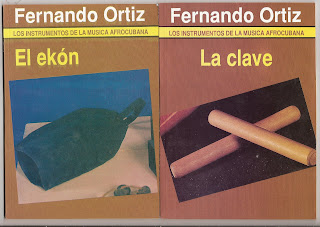Anyways I was reading the book and came across this paragraph where Juan Bautista Castillo Mustelier describes Jiribilla as a kind of dance related to a rhythm called Tahona. Juan Bautista is from Santiago and from mixed Cuban and Haitian background. This is what the book says.
When Bautista arrived in Santiago, he danced the rumba-but in the Tajona tradition...
"Many people think there are just three kinds of rumba. But there is really a fourth style, and I introduced this style into the repertoire of Cutumba and Conjunto Folklorico de Oriente when I was the directore of both groups" Bautista said.
In Tajona, the force of the music powers the dancer into what is called the jiribilla, where the man must create, very quickly and very powerfully, certain improvisations. The dancer reacts to the repique drum, which is akin to thee quinto but comes from dahomey. In fact I'd seen this the night before at Teatro Marti: a spectacular eruption of dancing that seemed like a controlled convulsiuon"
~Rites of Rhythm, pages45-46
Anyways I have heard very little concerning exactly what Tahona is beyond the term being used in the title of this Chavlonga recording. Chavlonga is certainly an elder in rumba, and the rhythms in the recording sound different when compared to Los Munequitos for example. However I have not really done any in depth analysis of Chavlonga's record, assuming I even have the skill for such to be meaningful in any way. Still it's a fascinating subject, these old and obcsure rumbas.






















